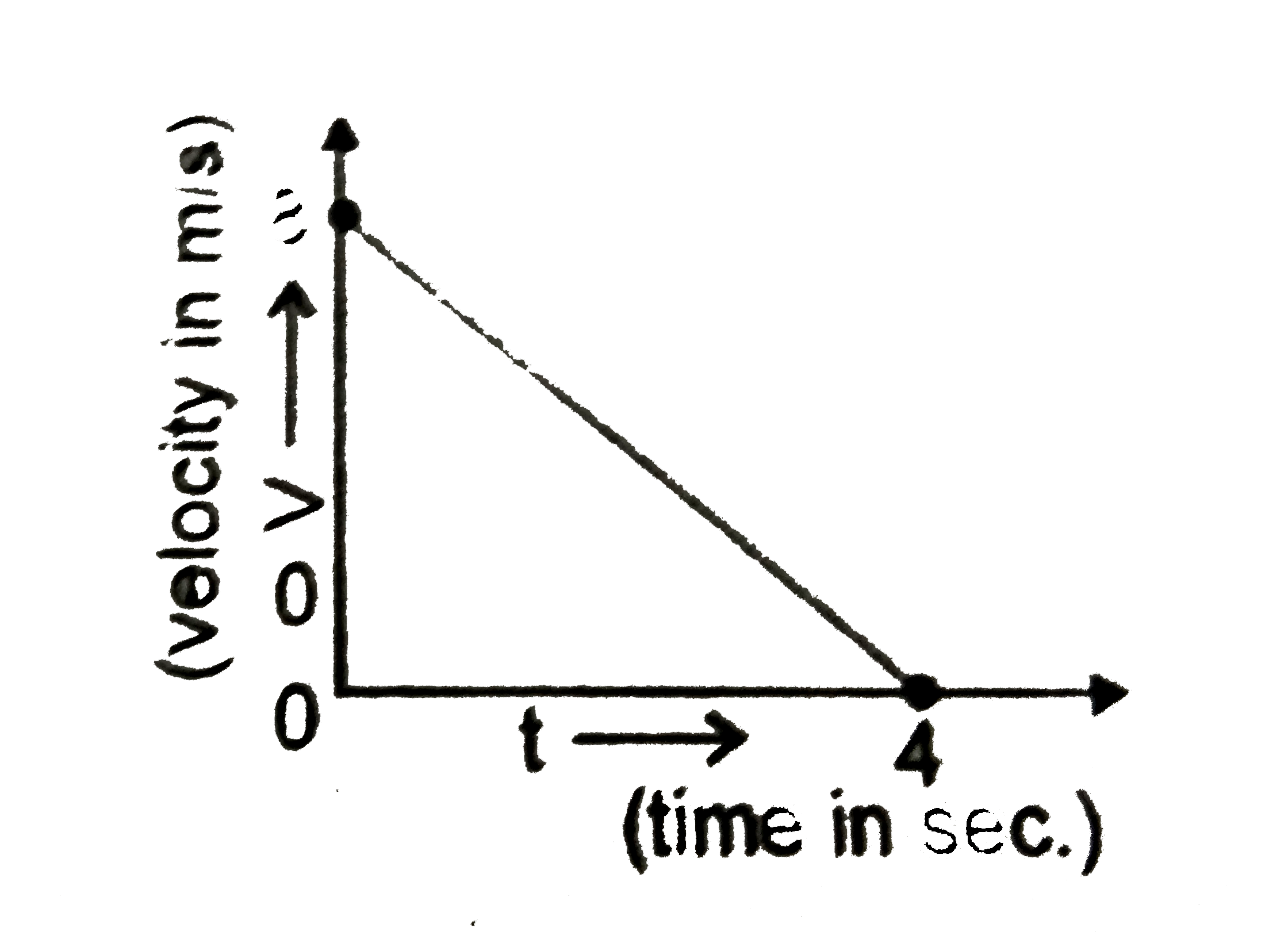A horizontal force of 1 N is needed to keep a block of mass 0.25 kg sliding on a horizontal surface with a constant speed. The coefficient of sliding friction must be : [take g=10ms–2]
0.33
0.40
0.50
0.25
The correct Answer is:B
To solve the problem, we need to find the coefficient of sliding friction (μ) when a horizontal force of 1 N is applied to a block of mass 0.25 kg sliding on a horizontal surface at constant speed.
1. Identify the Forces Acting on the Block:
- The block is subjected to a horizontal force (F) of 1 N.
- The frictional force (f) opposing the motion is given by the formula:
f=μ⋅N
- Here, N is the normal force acting on the block.
2. Calculate the Normal Force:
- The normal force N for a block resting on a horizontal surface is equal to the weight of the block.
- The weight W of the block can be calculated using the formula:
W=m⋅g
- Given that the mass m=0.25kg and g=10m/s2:
N=W=0.25kg⋅10m/s2=2.5N
3. Set Up the Equation for Friction:
- Since the block is moving at a constant speed, the net force acting on it is zero. Therefore, the applied force is equal to the frictional force:
F=f
- Substituting the known values:
1N=μ⋅N
4. Substitute the Normal Force into the Equation:
- We already calculated N=2.5N:
1N=μ⋅2.5N
5. Solve for the Coefficient of Friction (μ):
- Rearranging the equation gives:
μ=1N2.5N=12.5=0.4
Final Answer:
The coefficient of sliding friction (μ) is 0.4.
---
- The block is subjected to a horizontal force (F) of 1 N.
- The frictional force (f) opposing the motion is given by the formula:
f=μ⋅N
- Here, N is the normal force acting on the block.
- The normal force N for a block resting on a horizontal surface is equal to the weight of the block.
- The weight W of the block can be calculated using the formula:
W=m⋅g
- Given that the mass m=0.25kg and g=10m/s2:
N=W=0.25kg⋅10m/s2=2.5N
- Since the block is moving at a constant speed, the net force acting on it is zero. Therefore, the applied force is equal to the frictional force:
F=f
- Substituting the known values:
1N=μ⋅N
- We already calculated N=2.5N:
1N=μ⋅2.5N
- Rearranging the equation gives:
μ=1N2.5N=12.5=0.4
The coefficient of sliding friction (μ) is 0.4.
Topper's Solved these Questions
- BOOK - MOTIONCHAPTER - NEWTON'S LAWS OF MOTION & FRICTION EXERCISE - Exercise - 2 SECTION-F :- Direction of friction, Pulley Block system on horizontal plane, Pulley Block system on inclined plane, Two Block system, Two Block on Inclined plane3videos
NEWTON'S LAWS OF MOTION & FRICTION
- BOOK - MOTIONCHAPTER - NEWTON'S LAWS OF MOTION & FRICTION EXERCISE - Exercise - 3 Section-A22videos
NEWTON'S LAWS OF MOTION & FRICTION
- BOOK - MOTIONCHAPTER - NEWTON'S LAWS OF MOTION & FRICTION EXERCISE - Exercise - 2 SECTION-D :- Spring force and spring cutting problems1videos
NEWTON'S LAWS OF MOTION & FRICTION
- BOOK - MOTIONCHAPTER - MODERN PHYSICS -1EXERCISE - EXERCISE-4 ( LEVEL- II)39videos
MODERN PHYSICS -1
- BOOK - MOTIONCHAPTER - NLM & FRICTIONEXERCISE - EXERCISE-4 ( LEVEL-II)15videos
NLM & FRICTION
Similar Questions
A body of mass 25 kg, is placed on a horizontal surface whose coefficient of friction 0.25. Find the frictional force action on it. Take (g=10ms−2)
View SolutionA body of mass 100 g is made just to slide on a rough surface by applying a force of 0.8 N. Find the coefficient of friction. Take g=10ms2.
View Solution
Knowledge Check
- Question 1 - Select One
A horizontal force of 129.4 N is applied on a 10 kg block which rests on a horizontal surface. If the coefficient of friction is 0.3, the acceleration should be
A9.8m/s2B10m/s2C12.6m/s2D19.6ms2 - Question 2 - Select One
A force of 49 N just able to move a block of wood weighing 10 kg on a rough horizontal surface , then coefficient of friction is
A12B14C16D18 - Question 3 - Select One
A horizontal force of 20 N is applied to a block of 10 kg resting on a rough horizontal surface. How much additional force is required to just move the block, if the coefficient of static friction between the block and the surface is 0.4 ?
A15.5 NB10.3 NC8.5 ND19.2 N
A block of mass 5kg lies on a rough horizontal table. A force of 19.6 N is enough to keep the body sliding at uniform velocity. The coefficient of sliding friction is
View SolutionA force of 10N is acting on a block of 20kg on horizontal surface with coefficient of friction μ=0.2. Calculate the work done by the force.
View SolutionA horizontal force of 490 N is required to slide a sledge weighing 600 kg f over a flat surface. Calculate the coefficient of friction.
View SolutionA 20 kg block is initially at rest on a rough horizontal surface. A horizontal force of 75 N is required to set the block in motion. After it is in motion, a horizontal force of 60 N is required to keep the block moving with constant speed. The coefficient of static friction is
View SolutionA block of mass 2kg is given a push for a moment horizontally and then the block starts sliding over a horizontal plane. The graph shows the velocity− time of the motion. The co− efficient of sliding friction between the plane and the block is :
 View Solution
View Solution

